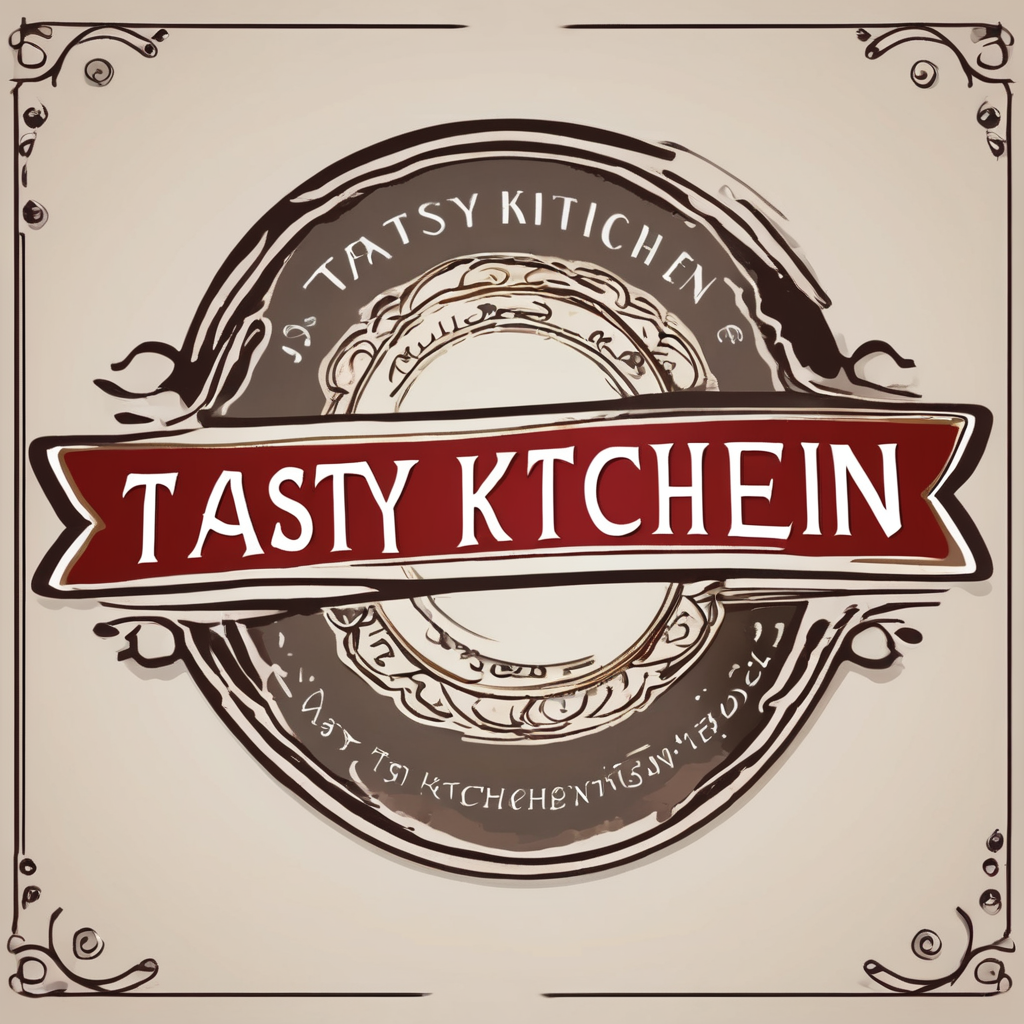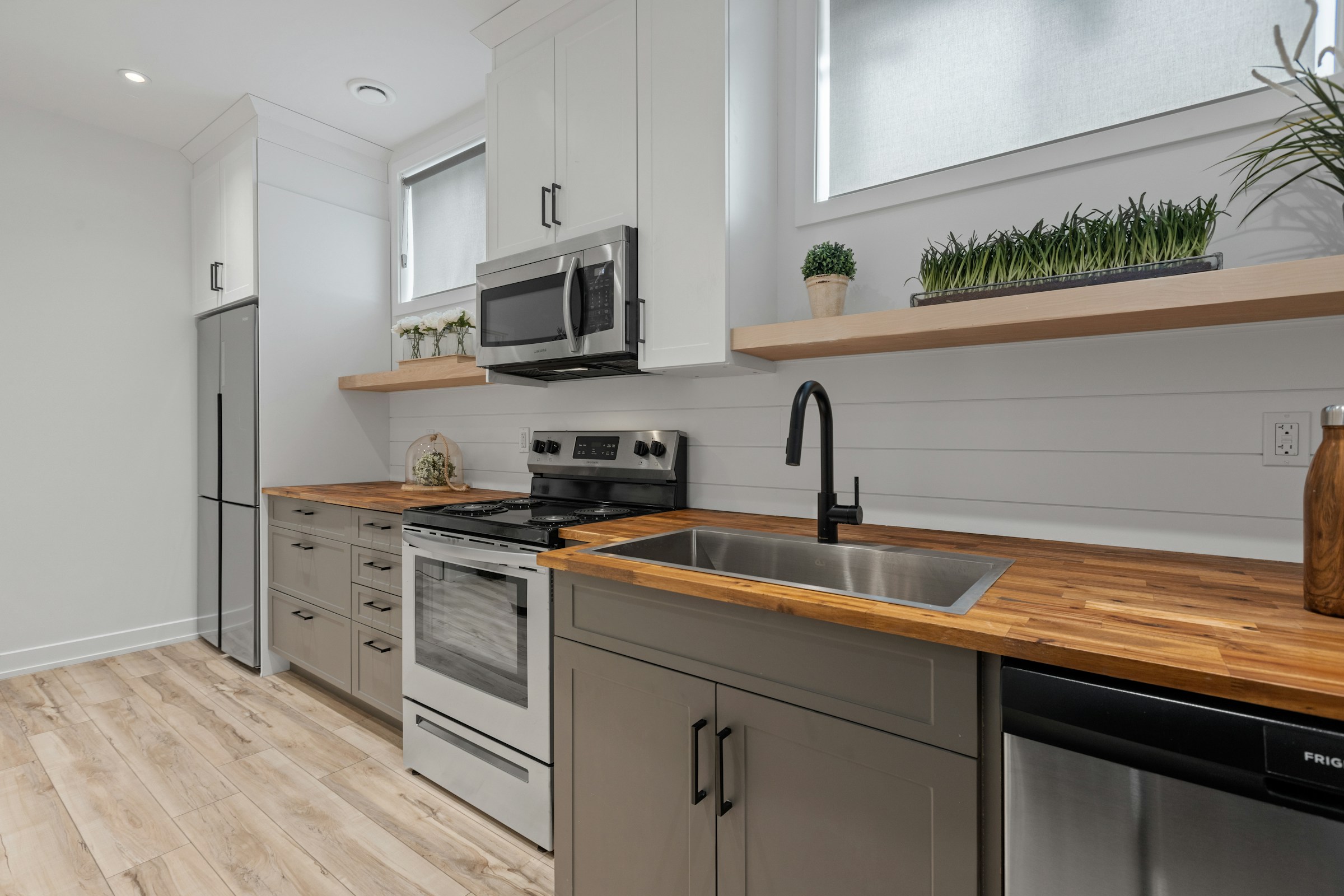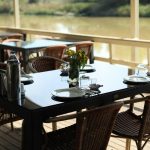Top Anti-Slip Flooring Solutions for Your Kitchen: Enhance Safety and Style
When it comes to kitchen flooring, safety and style are two of the most critical factors to consider. A kitchen is a high-traffic area prone to spills, grease, and water, making it a hotspot for slips and falls. In this article, we will delve into the top anti-slip flooring solutions that not only enhance the safety of your kitchen but also add a touch of style to this essential room in your home.
Understanding the Importance of Anti-Slip Flooring
Before we dive into the various flooring options, it’s crucial to understand why anti-slip flooring is so important. Kitchens are areas where accidents can happen quickly, especially when surfaces are wet or greasy. According to safety experts, slips and falls are among the most common household accidents, and the kitchen is one of the most vulnerable areas.
Topic to read : Transform Your Kitchen on a Budget: Top Cost-Effective Lighting Upgrade Ideas
“Slips and falls can be devastating, especially in the kitchen where the risk of injury is higher due to the presence of sharp objects and hot surfaces,” notes a safety expert. “Choosing the right anti-slip flooring can significantly reduce this risk and create a safer environment for everyone.”
Top Anti-Slip Flooring Options for Your Kitchen
Tile Flooring: A Timeless and Practical Choice
Tile flooring, particularly porcelain and ceramic tiles, is a top contender for anti-slip kitchen floors. These tiles are known for their exceptional durability and superior water resistance, making them ideal for kitchens.
Also to read : Top Strategies for Seamlessly Incorporating a Wet Bar into Your Kitchen Design
“Tile ranks among our top scratch-resistant flooring options and withstands the test of time, making it an ideal choice for kitchens,” explains an article from Today’s Homeowner.
Here are some key benefits of tile flooring:
- Water Resistance: Tile floors are completely waterproof when the grouting is done correctly, preventing water damage and mold issues.
- Durability: Porcelain tiles are more durable than ceramic tiles and can withstand heavy foot traffic.
- Easy Maintenance: Tile floors are easy to clean, and the grout can be sealed to prevent staining.
- Cost-Effective: Porcelain tiles are relatively inexpensive, ranging from $2 to $10 per square foot.
Luxury Vinyl Plank (LVP) Flooring: Versatile and Resilient
Luxury Vinyl Plank (LVP) flooring is another popular option for kitchens. It offers a realistic look of wood or stone without the high cost.
“LVP looks surprisingly real and is comparable in appearance to the real deal,” notes Today’s Homeowner.
Here are some key benefits of LVP flooring:
- Water-Resistant: LVP is water-resistant, making it an excellent choice for high-moisture areas like kitchens.
- Low Maintenance: LVP is easy to clean and maintain, with a cost range of $9 to $11 per square foot, including installation.
- Versatile Designs: LVP comes in multiple colors, textures, and patterns, offering a wide range of design options.
- Soft Underfoot: LVP is softer than many other flooring materials, alleviating physical strain for those who spend a lot of time in the kitchen.
Epoxy Flooring: The Ultimate in Durability and Safety
Epoxy flooring is a bold and resilient option that is gaining popularity in both residential and commercial kitchens.
“If you’re looking for foolproof kitchen flooring, epoxy is your best bet. Not only is it shock-, liquid-, and grease-proof, but it’s also super low maintenance,” highlights RenoQuotes.
Here are some key benefits of epoxy flooring:
- Durability: Epoxy flooring is highly durable and resistant to chemicals, making it perfect for commercial kitchens.
- Slip Resistance: Epoxy creates a seamless, jointless surface that is highly slip-resistant.
- Easy Maintenance: Epoxy floors are easy to clean and maintain, requiring only regular sweeping and mopping.
- Aesthetic Appeal: Epoxy flooring comes in a variety of colors and finishes, including glossy and matte options.
Cork Flooring: Eco-Friendly and Comfortable
Cork flooring is an eco-friendly option that is both comfortable and durable.
“Cork is an excellent choice if you spend hours in the kitchen cooking or baking. The soft feel is easier on your feet and will help relieve the soreness from standing for hours on an unforgiving surface,” explains Today’s Homeowner.
Here are some key benefits of cork flooring:
- Eco-Friendly: Cork is made from tree bark harvested every 8–10 years, making it a sustainable material.
- Comfortable: Cork is soft underfoot and provides natural insulation and soundproofing.
- Non-Slip: Cork has a natural non-slip surface, reducing the risk of slips and falls.
- Affordable: Cork flooring is relatively inexpensive, ranging from $3 to $7 per square foot.
Comparative Analysis of Anti-Slip Flooring Options
Here is a comprehensive table comparing the key features of the top anti-slip flooring options:
| Flooring Type | Average Cost Per Square Foot | Water Resistance | Durability | Maintenance | Slip Resistance |
|---|---|---|---|---|---|
| Tile | $2 to $10 | High | High | Easy | High |
| LVP | $9 to $11 | High | Medium | Easy | Medium |
| Epoxy | Varies | High | Very High | Easy | Very High |
| Cork | $3 to $7 | Medium | Medium | Easy | High |
Additional Tips for Enhancing Slip Resistance
Non-Slip Treatments
For existing floors, non-slip treatments can significantly enhance slip resistance. Products like Stone Grip offer a quick and effective solution.
“Stone Grip is a non-slip treatment that works on most natural stone floors and stairs, including porcelain and ceramic tiles. It creates slip-resistant tile and natural stone floors in just minutes with no change of appearance,” explains the product description.
Textured Surfaces
Textured flooring surfaces provide better traction, which is particularly beneficial in kitchens and bathrooms.
“Textured flooring surfaces provide better traction, making it safer for staff and customers alike,” notes Biyo POS.
Strategic Layouts
Incorporating a strategic layout that minimizes traffic flow in high-risk areas can also help reduce the likelihood of slips and falls.
“Proper planning goes hand-in-hand with flooring choices for overall safety,” advises Biyo POS.
Practical Insights and Actionable Advice
Choose Flooring Based on Your Needs
When selecting flooring, consider the specific needs of your kitchen. For example, if you have a busy kitchen with high foot traffic, epoxy or tile flooring might be the best option.
“Hardwood is an obvious and sought-after choice for kitchen floors, but it may not be the best for homeowners working with a limited budget,” suggests RenoQuotes.
Consider Maintenance Costs
While the initial cost of flooring is important, it’s also crucial to consider the long-term maintenance costs.
“Laminate flooring is easy to remove and replace if you intend on selling your home and the new buyers are asking for new kitchen floors,” notes RenoQuotes.
Ensure Proper Installation
Proper installation is key to the longevity and performance of your flooring.
“Bamboo flooring dents easily, so the installation process has to be done with the utmost care,” advises RenoQuotes.
Choosing the right anti-slip flooring for your kitchen is a decision that should not be taken lightly. By considering factors such as durability, water resistance, and maintenance, you can create a safe and stylish kitchen that meets all your needs.
“Whether you opt for tile, LVP, epoxy, or cork, the right flooring can make a significant difference in the safety and aesthetic appeal of your kitchen,” concludes a flooring expert.
By following the tips and insights provided in this article, you can ensure that your kitchen flooring is not only beautiful but also safe and functional. Remember, safety and style are not mutually exclusive; with the right choice, you can have both.






